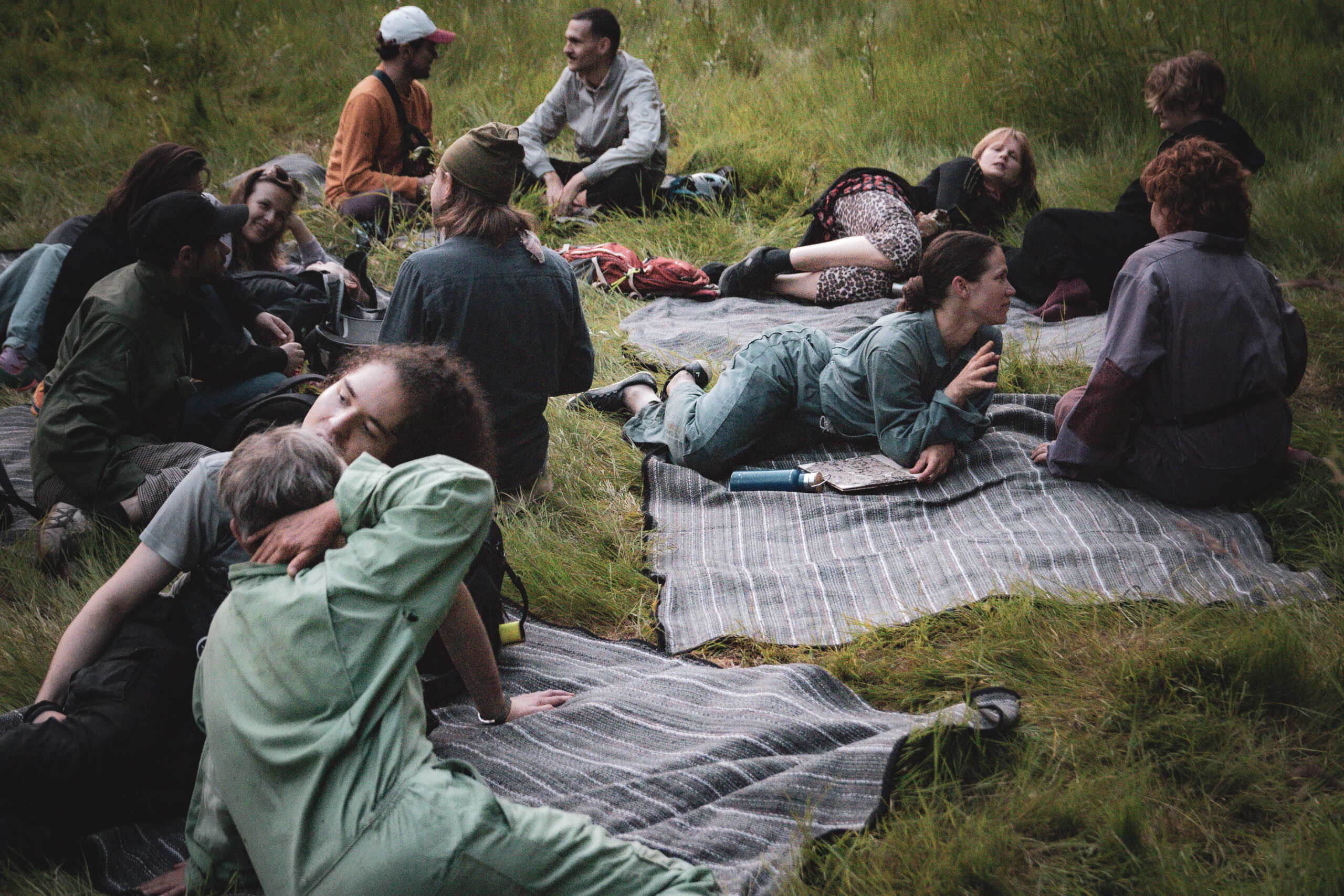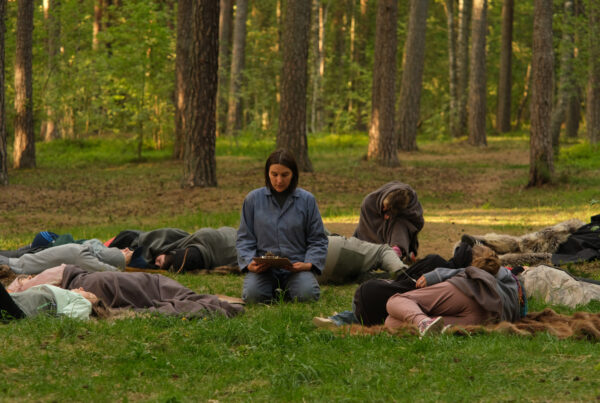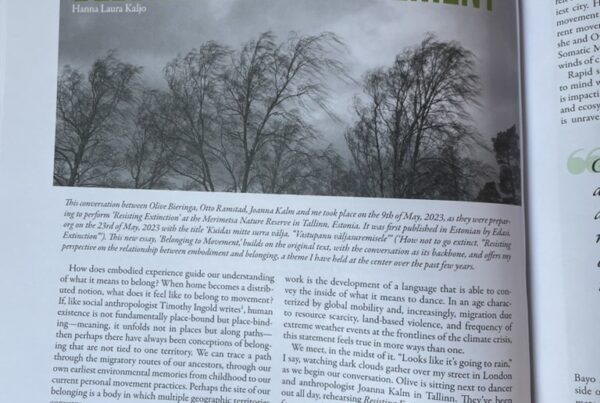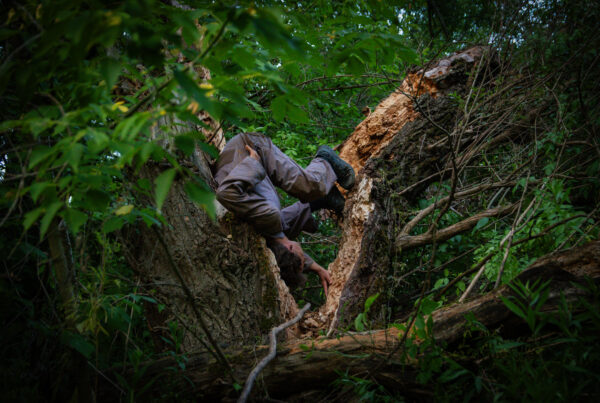15/09/2025
Kinga Senczyk
What is performative art in public space? What benefits does taking it to the street bring? How can choreographic activities interact with the so-called open-air setting, and what are they to each other? Venturing into the off-stage space carries significant risk—more unforeseen situations that can completely alter the context of the work, requiring adaptation along the way. Writes Kinga Senczyk.
The history and social context of a place also come into play – public space is predetermined, often multiply marked. Entering it requires courage, appropriate sensitivity, and the skill to wisely utilize the material and immaterial fabric of a place. Only then can it be consciously highlighted, reinforced, overwritten, pushed apart, and supplemented with new meanings and worlds. Let’s examine this through the example of several recent choreographic works, presented in Warsaw in May and June of this year.
Resisting Extinction – A Performative Event in the Vistula River Oxbow Lake
The BodyCartography collective is traveling the world (before the Polish shows, the project was conducted in Norway, New Zealand, Estonia, Sweden, and Cyprus, among other places), reflecting on the climate crisis, understood as an identity crisis. The performance in Warsaw took place on the banks of the Vistula River, on the Miedzeszyński Embankment side. The nearly three-hour event was divided into three parts, during which we were invited to various forms of contemplation of nature.
In the first, the performers divided the audience into smaller groups of three or four and acted as their guides, leading them in various directions and inviting them to explore the area together. This isolation, the reduced group size, and the distance between the performers and those receiving the activities fostered more personal and intimate conversations. These focused on reflections on personal experiences with nature, connection with nature, and its current state. The conversations and the type of leadership given to each group depended on the guide’s personality.
In the group I joined, the performer first warned us that she would be inviting us to participate and engage in conversation. With great respect for our choices, she emphasized that we were welcome to join, but not required. If we didn’t feel like it or didn’t agree to a particular activity, we could observe. As we walked together through the riparian vegetation, she gently invited us to collaborate and discuss dead and living nature, and the drying of the earth. We explored leaves and grasses with our senses, or nestled in the sun-warmed sand to contemplate what we might lose due to irreversible climate change. It was a delightful journey, mindful of our surroundings, but also of each other in this particular ecosystem.
The second part involved independent exploration of the former Vistula River bed, now overgrown with lush vegetation. In its nooks and crannies, visitors could encounter animals large and small (some even saw a moose) for whom this was their natural home, as well as performers who attempted to blend in with their surroundings while simultaneously reviving and embodying creatures threatened with extinction.
The final activity was a collective visualization of the end. The audience could choose one of two scenarios: death by drowning or dehydration. That day, the group chose the latter. Lying or sitting on blankets spread on the ground with our eyes closed, we listened to a detailed description of death, the biological mechanisms occurring in our bodies as a result of water deprivation. The medical, cold, and devoid of empathy nature of the text, describing what was theoretically happening to my body, caused me resistance. I didn’t want to hear it, let alone imagine myself in such a situation. Nature unexpectedly proved to be my refuge – the rustle of trees and grass in the rising wind, which drowned out the narrator’s words, and I could feel it on my skin. In this visualization, the actual reference to the surrounding nature became crucial as a warning, proving to be a safety valve.
At the end of this part, all the performers began humming and singing a song about nature, standing around a group of spectators. It was reminiscent of Polish traditional songs, also imbued with references to the natural world and the seasons, which intertwine with the human life cycle. An important dimension of folk songs is their communal nature, which here was expressed not only in the singing but also in the less formal finale, where everyone sat, chatted, and drank nettle infusion.
Each version of “Resisting Extinction” was set in the specific space in which it was presented. Before the Warsaw performance, the performers also prepared with the help of botanists and scientists, who led nature walks and spoke about specific species inhabiting the Vistula’s oxbow lake. This thread, which emerged in the post-performance conversations, was most interesting to me.
Performers : Olive Bieringa and Otto Ramstad, Maria Lothe, Angelika Mizińska, Agnieszka Bogusławska, Teresa Więcko, Bartłomiej Mikuła, Kasia Stankiewicz.
Date and place of presentation: June 21-22, green areas along the Vistula River from the Praga Południe side, Vistula oxbow lake.



